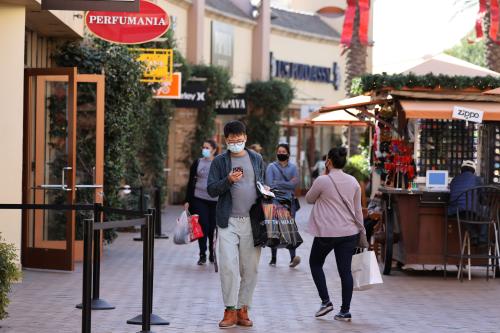The COVID-19 pandemic caused an unprecedented worldwide consumption decline and dramatically changed consumer behavior almost overnight. But what happens once the pandemic is over? Does everything simply return to “normal,” much like flipping a switch?
At the McKinsey Global Institute, we analyzed consumer demand and behavior during the pandemic in China, France, Germany, the U.K., and the U.S. in a new report, “The Consumer demand recovery and lasting effects of COVID-19.” We found that the experience of the pandemic varied widely across income, age, and geographies, not just in terms of health but the economic impact too.
That’s why we analyzed consumer spending according to disposable income and age as both criteria have a substantial impact on the size and structure of consumption.
We then examined behavioral shifts forced on consumers in the pandemic to identify what behavior may persist after the pandemic ends.
Overall, we found that the exceptional nature of the shock provides reasons to be optimistic for a fast rebound in consumer spending once the pandemic is over. Unlike previous recessions, this one involves no consumer debt overhang, bursting asset price bubbles, or long-term business cycle fluctuations.
The sudden and deep drop in consumption across China, the U.S., and Western Europe, ranging from 11 to 26 percent, resulted mainly from cutbacks to in-person services, especially travel, entertainment, and dining. These categories have been growing steadily, and consumer surveys indicate a likely strong demand rebound once the pandemic ends.
The 10-20 percentage-point spike in the savings rate in the U.S. and Western Europe in 2020 (a doubling in the U.S.) left many households in a strong position to spend.
What’s more, China’s consumer spending recovery after controlling the COVID‑19 virus is another reason for optimism.
But looking closer at the recovery by segments in our sample of countries, (we examine nine segments divided into low, middle, and high income and young, middle age, and older) we find that the recovery in consumer demand is likely to be uneven, especially in the U.S. (Figure 1).
We expect spending by middle- and high-income cohorts in the U.S. to bounce back to pre-COVID-19 levels between 2021 and 2022, as higher-income households emerge largely unscathed financially from the pandemic.
But we found spending by lower-income cohorts could drop below pre-COVID-19 levels once stimulus measures expire as lower-income households have lost jobs or face income uncertainty, especially as companies have automated operations and moved online, potentially slowing down the jobs recovery in consumer services.
In Europe, we expect a slower but more balanced recovery, with less pronounced inequality than in the U.S., although low-income cohorts will likely recover slower than high-income without additional government stimulus.
But when it comes to consumer spending, what consumers spend on matters too. And during the pandemic, long-standing consumer spending habits—more spending on services, greater digital adoption, and more time and money spent out of the home—were interrupted, accelerated, or reversed.
To determine whether these pandemic-induced behaviors are likely to stick, we examined six consumption shifts that cover a broad range of consumer life and are drawn from sectors that cover almost three-quarters of consumer spending.
These include an acceleration of e-grocery shopping, a sharp decline in live entertainment, the emergence of home nesting (that is, spending on items such as home gyms, backyards and gardens, and gaming equipment), a decrease in leisure air travel, a switch to remote learning, and an increase in virtual health care visits.
We found that e-grocery shopping, virtual health care visits, and home nesting were likely to stick. However, remote learning, declining leisure air travel, and live entertainment will likely revert closer to pre-pandemic patterns (Figure 2).
Our analysis indicates that the speed and depth at which behavioral changes embed themselves within a population also depend on the actions of governments and industries. For example, product and service innovations shape consumer choices while government regulations nudge consumer behavior. So, in fact, what companies and governments do will shape consumer behavior post-pandemic at least as much as consumers themselves.
While in aggregate the recovery in consumer demand may look like a return to normal, our analysis leads us to conclude that in fact the shape and structure of consumer spending may be quite different, and this may lead to even greater polarization of consumption.
-
Acknowledgements and disclosures
I would like to thank Wolfgang Fengler from the World Bank and Homi Kharas and the World Data Lab team for sharing their insight and expertise.
The Brookings Institution is committed to quality, independence, and impact.
We are supported by a diverse array of funders. In line with our values and policies, each Brookings publication represents the sole views of its author(s).








Commentary
What will the consumer demand recovery from COVID-19 be like?
March 24, 2021